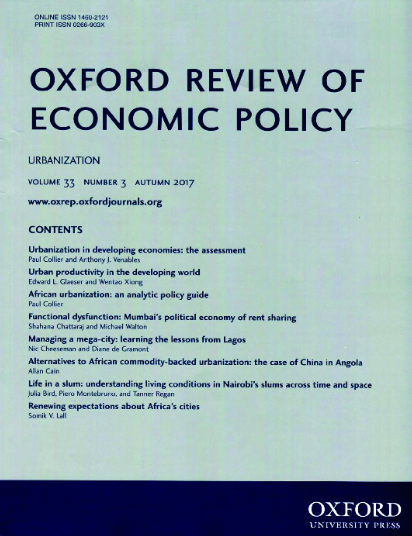Implications of household-level evidence for policy models: the case of macro-financial linkages
IF 1.8
2区 经济学
Q2 ECONOMICS
引用次数: 6
Abstract
Macroeconomic policy models should track the different channels of monetary transmission, providing a framework for Monetary Policy Committees. They should also be useful for assessing risks to financial stability, including for designing macroprudential stress tests and instrument settings in the new macroprudential toolkits. Current policy models, including the ‘semi-structural’ non-DSGE econometric models such as FRB-US, are seriously deficient in these respects, failing to capture the credit channel and the role of real estate in the financial accelerator that operated in the global financial crisis, and in key transmission channels in the recovery. Furthermore, developments in economic theory, greatly encouraged by new evidence, have rendered redundant the previously accepted micro-foundations for household behaviour in these policy models. A multi-purpose policy model needs to include a household-housing sub-system. This should contain a consumption function broadly consistent with the micro-evidence with equations for permanent income, for the balance sheet drivers, and for residential investment. To capture the credit channel, this block of the model needs to embed common credit conditions in the equations. Sub-system estimation is required to impose the cross-equation restrictions implied by these common factors.家庭层面证据对政策模型的影响:以宏观金融联系为例
宏观经济政策模型应跟踪货币传导的不同渠道,为货币政策委员会提供一个框架。它们还应有助于评估金融稳定风险,包括在新的宏观审慎工具包中设计宏观审慎压力测试和工具设置。目前的政策模型,包括诸如FRB-US之类的“半结构性”非dsge计量经济模型,在这些方面都存在严重缺陷,未能捕捉到信贷渠道和房地产在全球金融危机中发挥的金融加速器作用,以及在复苏中的关键传导渠道。此外,在新证据的大力鼓励下,经济理论的发展使这些政策模型中先前接受的家庭行为微观基础变得多余。一个多用途的政策模型需要包括一个家庭住房子系统。这应该包含一个消费函数,它与微观证据大体一致,具有永久收入、资产负债表驱动因素和住宅投资的方程。为了捕获信用渠道,模型的这一部分需要在方程中嵌入常见的信用条件。子系统估计需要施加这些共同因素所隐含的交叉方程限制。
本文章由计算机程序翻译,如有差异,请以英文原文为准。
求助全文
约1分钟内获得全文
求助全文
来源期刊

Oxford Review of Economic Policy
ECONOMICS-
CiteScore
12.50
自引率
1.50%
发文量
41
期刊介绍:
The Oxford Review of Economic Policy is a refereed journal which is published quarterly. Each issue concentrates on a current theme in economic policy, with a balance between macro- and microeconomics, and comprises an assessment and a number of articles. It gives a valuable appraisal of economic policies worldwide. While the analysis is challenging and at the forefront of current thinking, articles are presented in non-technical language to make them readily accessible to all readers. The Oxford Review is aimed at a wide audience including government, business and policy-makers, as well as academics and students. It is required reading for those who need to know where research is leading.
 求助内容:
求助内容: 应助结果提醒方式:
应助结果提醒方式:


